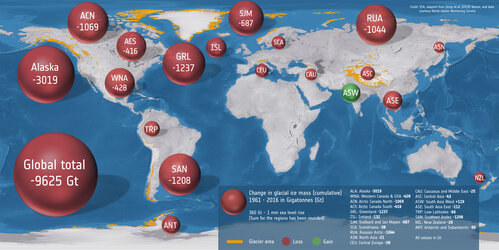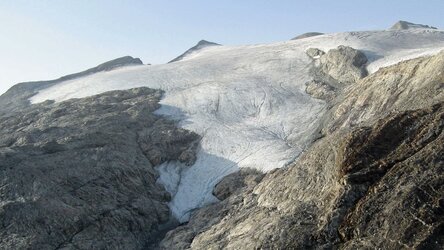ESA astronaut joins glacier expedition in Alps
From space, the synchronous retreat of the world’s glaciers can be clearly observed. To get a first-hand view of these changes, ESA astronaut Luca Parmitano, along with Susanne Mecklenburg, Head of ESA’s Climate Office, have joined a science expedition taking place at one of the biggest ice masses in the Alps: the Gorner Glacier.
The pair accompany a scientific team that is documenting how the glacier is changing in response to global warming. Situated near the Monte Rosa massif close to Zermatt, Switzerland, the Gorner Glacier is one of the most extensively studied glaciers in the world. Its front has been retreating drastically since the end of the 19th century, and in the last few years, its retreat has been accelerating.
According to Susanne: “Gorner is one of only a few hundred of the world’s 215 000 glaciers that are regularly monitored in the field. Observations from satellites, including missions such as Copernicus Sentinel-2, provide complementary information and contribute substantially to their monitoring.”

Spanning decades, space-based observations have contributed to the latest scientific assessment of the climate, including changes taking place across the world’s glaciers. The first installment of the 2021 Intergovernmental Panel on Climate Change (IPCC) report released earlier this month makes for bleak reading. The report states that worldwide glacier ice losses since the second half of the 19th century have been unprecedented in at least the last 2000 years.
Data records, using satellite observations, also point to an increased rate of ice loss since the 1990s with glacial meltwaters considered a dominant contributor to global mean sea level rise from 2006-2018.
The long-term observation datasets that provide scientific evidence for key aspects of the climate – including glaciers – are generated via ESA’s Climate Change Initiative (CCI), using data from a wide range of satellites.
The CCI’s glacier project research team provide global extent, elevation change and velocity satellite-derived products that form important baseline data for change assessment to better understand glacier response to climate change.

Recent satellite-based assessments for a subset of the world’s glaciers revealed in recent years that glaciers lost over 9 trillion tonnes of ice between 1961 and 2016, while a more recent global assessment confirms this trend with greater certainty and spatial coverage.
Luca Parmitano commented, “When we look at the Gorner Glacier now, we already see the past, not the present. What we see will not be here in a few years from now because it’s already disappearing. The temperature changes that we are currently facing have already affected this glacier in a way that will never go back.
“This is an incredibly sad story, but it must be the starting point for us to raise awareness and take responsibility in order to slow down climate change.”
The ESA-led expedition is being filmed for an upcoming documentary ahead of the Pre-COP Milan at the end of September and the United Nations Climate Change Conference (COP26) taking place in Glasgow, Scotland from 31 October to 12 November 2021.
Stay tuned and keep up with the latest Earth observation news by following ESA Earth observation on Twitter and Instagram.















